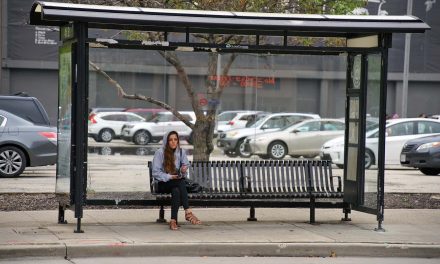
Governor Tony Evers unveiled his plan on January 27 to use a portion of the state revenue surplus funds to address rising costs facing Wisconsin families while defraying costs for caregiving and childcare that present barriers to employment.
The nonpartisan Legislative Fiscal Bureau (LFB) recently released new projections indicating the state general fund balance will have a $3.8 billion surplus at the end of the 2021-23 biennium—nearly $2.9 billion more than was expected in June 2021. The news comes as Wisconsin’s unemployment rate and the number of people unemployed are the lowest in state history while the state’s ‘rainy day fund’ sits at the highest level ever.
In response to the new projections, and in contrast to Legislative Republicans who indicated they have no immediate plans to use the windfall prior to the next biennial budget that will likely not be passed until summer 2023, Governor Evers emphasized that Wisconsinites cannot wait for over a year to be provided relief from rising costs at the checkout line and gas pumps.
The governor’s plan invests nearly $1.7 billion of the projected revenue surplus to provide a $150 surplus refund to every Wisconsin resident, provide $131.8 million in targeted tax relief to caregivers and families, and invest almost $750 million in education, while holding the line on property taxes.
“I’m proud of the work we’ve done over the last three years to provide hundreds of dollars in relief to Wisconsinites through withholding tax table changes and our tax cuts—including one of the largest income tax cuts in state history — but I also know folks are still being stretched thin due to everyday costs going up,” said Governor Evers. “My plan puts even more money in people’s pockets to help make ends meet, bolsters our workforce by helping families with the costs of childcare and caregiving, and makes robust investments in our kids and our schools without raising property taxes.
Governor Evers’ plan proposes sending every Wisconsin resident $150 to help defray rising costs Wisconsin families are experiencing and as businesses face challenges getting supplies and resources. Every Wisconsinite will be able to receive the full surplus refund, including for each of their dependents.
A family of four, for example, would receive $600 under the governor’s proposal. Most Wisconsinites would have to take no action to receive the refund, which would be distributed through information provided by an individual on their tax returns.
“I’ve said it before, and I’ll say it again — Wisconsinites can’t wait for relief from rising prices,” added Governor Evers. “So, I hope the Legislature joins me in returning the projected revenue surplus to the taxpayers while supporting our workforce and providing additional relief to folks who need it most.”
The plan builds upon Governor Evers’ efforts announced earlier in January to help address rising costs and keep more money in Wisconsinites’ pockets. Gov. Evers directed the Department of Revenue to revise its withholding tax tables, which affects how much income employers withhold from an employee’s paycheck in taxes.
Based on the directed changes and tax cuts Governor Evers has signed into law during his time in office, over the course of this year, a single filer making $50,000 will see $551 more in their paychecks while a married couple each earning $50,000 combined will see over $1,200 more for their household in their paychecks. The 2021-23 budget contained one of the largest tax cuts in Wisconsin state history and provided $2 billion in individual income tax relief over the biennium and approximately $1 billion annually going forward.
When combined with prior reductions, the 2021-23 budget provided tax relief to 2.4 million taxpayers. Through the governor’s tax cuts signed during his time in office, 86 percent of Wisconsin taxpayers will see an income tax cut of 15 percent or more, more than delivering on Gov. Evers’ promise to provide a 10 percent tax cut to middle-class families.
Addressing Barriers to Filling Jobs
In addition to measures aimed at addressing rising costs, Gov. Evers’ plan also includes additional provisions aimed at reducing the costs for childcare and caregiving—key proposals to help support Wisconsin’s workforce and address barriers to employment. Gov. Evers’ plan proposes expanding the newly created Child and Dependent Care Credit from 50 percent of the federal credit to 100 percent.
This will provide nearly $30 million in tax relief to 107,000 Wisconsinites who claim the federal credit, or about $274 per filer. Most people who are eligible for the credit could receive up to $600 if they are claiming it for one qualifying individual’s expenses or $1200 for two or more qualifying individuals’ expenses. Additionally, Governor Evers is proposing to create an income tax credit for qualified expenses incurred by a family caregiver.
A majority of Wisconsinites are in income ranges to be eligible for the credit, and most filers will receive up to $500, while married-separate filers will receive up to $250. The governor’s plan would provide an estimated more than $100 million in tax relief to Wisconsinites who are experiencing increased costs and expenses caring for a family member. The governor originally proposed creating the Caregiver Tax Credit in his 2021-23 biennial budget, but the move was rejected by Republicans in the Legislature.
Investing in What’s Best for Our Kids
The governor’s plan also invests nearly $750 million into education at every level to continue improving school quality and address the state’s achievement gap while providing $188 million in property tax relief. Governor Evers’ plan ensures the state meets federal requirements and preserves more than $2.3 billion in federal aid for Wisconsin’s kids and schools — funds that have previously been jeopardized based on the Legislature’s failure to meaningfully invest in education through the biennial budget process.
In addition to releasing revenue projections this week, the LRB released a separate memo indicating the state is projected to fail to meet federal requirements for K-12 education funding in fiscal year 2022-23, again putting the state at risk of losing billions in federal funds for schools.
Governor Evers had previously called a special session of the Legislature to provide more than $400 million for K-12 education and more than $100 million for higher education to meaningfully fund education at every level and ensure the state would not be in a position where federal school aids could again be jeopardized.
Republicans in the Legislature rejected the opportunity to make further investments in Wisconsin kids and gaveled out of the special session without consideration or debate.













